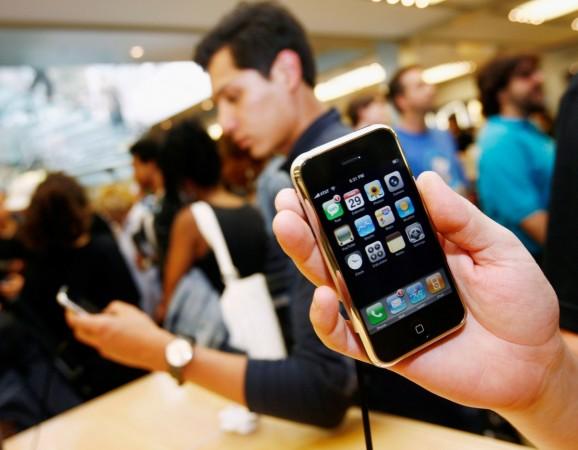
Apple's iPhones need no introduction in the smartphone world but 10 years ago people had no idea what an iPhone felt like. On June 29, 2007, the first ever iPhone went on sale in the US, giving its buyers the first-hand experience of what Apple called a combination of "a revolutionary mobile phone, a widescreen iPod with touch controls, and a breakthrough internet communications device."
Apple's co-founder Steve Jobs introduced the iPhone at the 2007 Keynote and did not shy away from criticising every other smartphone in the market at the time. Jobs highlighted the importance of convenience using a smartphone even for the most difficult tasks. Making his second public phone call to Starbucks while showing off the Maps app at the launch event, Jobs almost ordered 4,000 Lattes to go.
Apple's original iPhone was a first for many features like threaded text messages, GPS-based navigation, multi-touch, and apps. On its tenth year anniversary since the first iPhone went on sale, here's how far Apple has come in its journey to make the best smartphone ever.
From the revolutionary software to UI and design, everything has significantly improved the 10th generation iPhone – the iPhone 7 and iPhone 7 Plus. The iPhone 7 Plus is the most advanced iPhone in the history of iPhones and bags some of the top-notch features. The latest iPhone certainly makes the first iPhone look obsolete, but let's just take you through a quick comparison of how the iPhone 7 Plus looks in front of the iPhone.

The iPhone's design has gradually changed over the years, but if we look at the iPhone and iPhone 7 Plus then the difference is significant. From a 3.5-inch display, which was quite big during its time, to a 5.5-inch screen in the iPhone 7 Plus, Apple made quite a leap. The screen resolution has also increased from 320x480 pixels to 1920x1080 (Full HD) pixels.
The original iPhone lacked a front camera, Siri, 3G and 4G bands, fingerprint scanner and a 30-pin connector was responsible for charging the device instead of a Lightning port as we see in today's iPhones. There was a 2MP rear camera in the iPhone as compared to two 12MP rear cameras and a 7MP front snapper in the iPhone 7 Plus. This has enabled photography to be a part of everyone's daily life and not just a professional requirement.

From a measly 128MB RAM and 16GB storage to 3GB RAM and 256GB storage, the latest iPhone 7 Plus is a powerhouse. The iPhone 7 Plus is powered by the latest A10 Fusion quad-core chipset, which guarantees lag-free user experience.
Apple also increased the sizes of batteries in its iPhones year after year. From a 1,400mAh to 2,900mAh, the iPhone 7 Plus packs the biggest battery than any other iPhone. The new iPhone also weighs 0.11 pounds heavier than the original iPhone, but that's mainly due to the metallic construction and the additional spares that make the new iPhone better.

One thing remained consistent: Apple's iPhones were never affordable. The company maintained its iPhones remain flagship and refrained from jumping the ship to affordable smartphones. The company did launch iPhone SE at a lower price, but it never got the attention its flagship iPhones do.
The original iPhone was launched at $499 and people had camped for days outside Apple Stores just to buy the phone. The tradition continues to follow even today as the new iPhone 7 Plus starts at $769. In the last 10 years, Apple has launched a total of 13 iPhones and its sales have already surpassed one billion.
Upon completing 10 years of iPhone's success earlier this year, Apple CEO Tim Cook said that the "iPhone set the standard for mobile computing in its first decade and we are just getting started. The best is yet to come."














